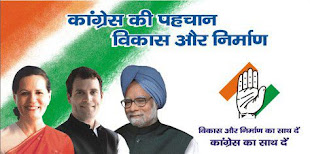K R Sudhaman
In Developed countries Monetary policy which is unveiled by the central bank periodically is mainly aimed at keeping inflation low. In India as well as many other developing economies central banks have twin objective of controlling inflation and pushing growth.
It is therefore a balancing act always for Reserve Bank of India, which has to contain inflation without impeding growth momentum, every three months monetary policy review takes place. Of course, central bank can intervene in between if an unusual situation arises warranting policy action.
In the face of global currency crisis in 2008 which blew over into a recession, unprecedented since the great depression of 1928, central banks world over including India had to take swift monetary action to get out of the monumental crisis.
With severe liquidity crunch in the banking system and collapse of several top global banks due to mounting bad debts, policy actions were required to pump-in money into the system so that demand picks up and thereby the plummeting growth, crucial for the health of the economy.
Instead of keeping tight control of money supply and interest rates, central bank adopted easy monetary policy by injecting more money into the system and lowering interest rates which fell to near zero in developed countries to prop up growth that became negative in some countries.
Conservative Approach By RBI
Unlike in many other countries, Reserve Bank of India has been conservative in its monetary policy and the Government very cautious in moving towards full float of rupee, that is total capital account convertibility.
This approach helped India to ward off a major crisis and economic recovery from the global recession faster. During the crisis the Government and Reserve Bank had to come out with fiscal stimulus and monetary stimulus packages to revive the economy. This pushed the Government’s fiscal deficit up to 6.7% of GDP (2009-10) due to increased spending, leading to high borrowing.
Reserve Bank’s Monetary policy became very accommodative releasing more cash into the system and lowering key policy rates to reduce interest rates so as to ensure that cost of borrowing is less.
It is therefore a balancing act always for Reserve Bank of India, which has to contain inflation without impeding growth momentum, every three months monetary policy review takes place. Of course, central bank can intervene in between if an unusual situation arises warranting policy action.
In the face of global currency crisis in 2008 which blew over into a recession, unprecedented since the great depression of 1928, central banks world over including India had to take swift monetary action to get out of the monumental crisis.
With severe liquidity crunch in the banking system and collapse of several top global banks due to mounting bad debts, policy actions were required to pump-in money into the system so that demand picks up and thereby the plummeting growth, crucial for the health of the economy.
Instead of keeping tight control of money supply and interest rates, central bank adopted easy monetary policy by injecting more money into the system and lowering interest rates which fell to near zero in developed countries to prop up growth that became negative in some countries.
Conservative Approach By RBI
Unlike in many other countries, Reserve Bank of India has been conservative in its monetary policy and the Government very cautious in moving towards full float of rupee, that is total capital account convertibility.
This approach helped India to ward off a major crisis and economic recovery from the global recession faster. During the crisis the Government and Reserve Bank had to come out with fiscal stimulus and monetary stimulus packages to revive the economy. This pushed the Government’s fiscal deficit up to 6.7% of GDP (2009-10) due to increased spending, leading to high borrowing.
Reserve Bank’s Monetary policy became very accommodative releasing more cash into the system and lowering key policy rates to reduce interest rates so as to ensure that cost of borrowing is less.



























0 Comments